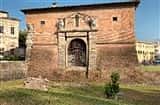Stay
Visit a locality browsing the menu on the left. In each Italy area you can then choose the best touristical structures we are proposing.
Most viewed in
Italy
-
Sunland since 1979 is the leading tour operator for ground hanling services on Amalfi Coast, Cilento and Neapolitan Riviera. Sunland is the partner of some of the biggest tour operator world wide. Our attentive staff is at your service for: Hotel accomodation...
-
The Amalfi Coast, suspended between sea and Sky, is a land of an amazing beauty. Our wish, having the pleasure to be your driver/guide, is to share with you the traditions, art, history, landscapes and the beauty that makes this land, " The Divine Amalfi...
-
Self-catering villas and apartments on the Amalfi Coast with pool, access to the sea and air conditioning. Amalfi Vacation owns and manages all the Amalfi Coast villas shown on the website. We are specialists in luxury villas and self-catering apartments...
-
Located on the famous AmalfiCoast drive, a few minutes from the famous town of Amalfi, the Santa Caterina enjoys a panoramic coastal setting of incomparable beauty. The history of this special resort is as impressive as its surroundings. In 1880, Giuseppe...
-
Situated on the last bend of Amalfi's promenade and beach, this hotel is on four levels. Bright and Mediterranean in style, the Marina Riviera is a converted old noble villa. All rooms are spacious & tastefully furnished, and have open windows or balconies...
Print this page
Send to a friend by e-mail
The furnace of Porta San Donato
-

The structure of the furnace of Porta San Donato was, in the local area, an unique example in its genre. Characterized by a rather particular conformation, linked to a production of "fine ceramics" , although it has also been used for the production of common ceramics frequently used in the preparation of Lucca dining tables. Why was used a furnace with this conformation for the production of precious artefacts with so little demand at local level? The answer to this question is in the historical documents about the furnace and its use.
We learn from these documents that in 1643, after the creation of a new entrance to the city, the huge spaces of the old gate of San Donato, were assigned to the Genoese craftsman Giovanni Antonio Salomoni, for the creation of a pottery factory. The furnace "indirect cooking" was necessary in the production of high-level majolica. Unfortunately we do not have findings of this production. Instead we have a large amount of artefacts related to the production of the so-called «graphite» ceramic, a much more common type.
It is natural to think that the Genoese craftsman Salomoni had come to Lucca to export in our area his precious majolica, for the creation of which a proper structure was needed. Unfortunately, this product was unsuccessful in Lucca, and Salomoni was forced to choose for the production of less valuable ceramics, but very much in demand locally. The production was then changed, but the structure of the furnace remained the same, this allowed him to use a refined workmanship in the production of a more common material.